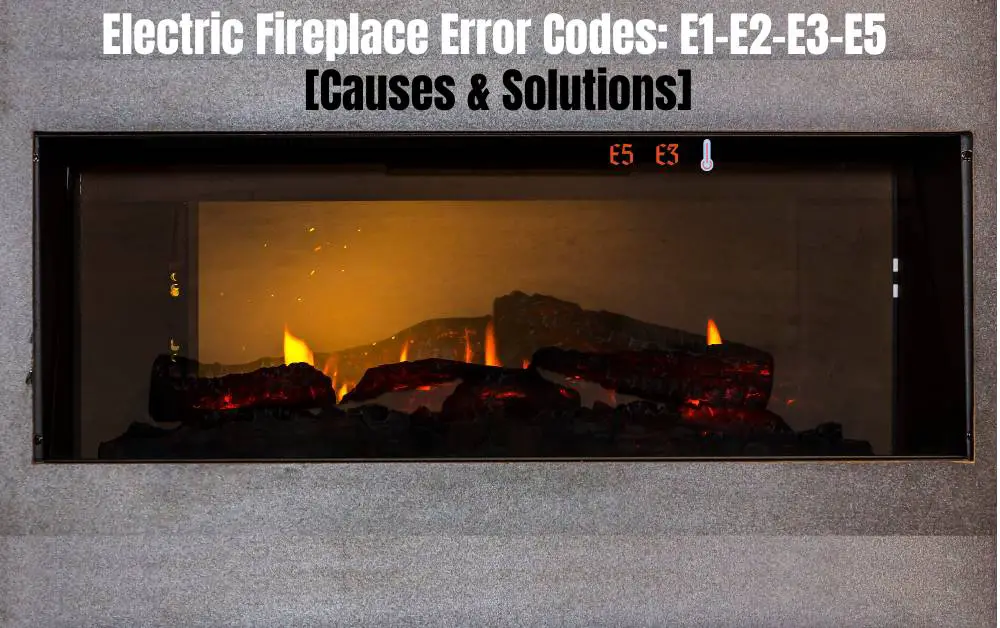When winter arrives, especially in climates where temperatures dip well below freezing, maintaining thermal comfort is a key challenge. Many homeowners rely on central heating systems, heat pumps, or gas furnaces, but electric fireplaces are increasingly considered as supplemental (or sometimes primary) heating sources—if they deliver enough warmth reliably.
This case study tracks a single-family home in a cold region (annual winter lows down to –10 °C / 14 °F) over one full heating season, exploring electric fireplace performance in winter, electric fireplace heating capacity, and lessons about the best electric fireplace for cold climate use.
Key questions this study addresses:
- Can an electric fireplace maintain occupant comfort during extreme low outdoor temperatures?
- How consistent is its temperature control (overshoot, drift, oscillation)?
- What is its effective heating capacity across different outside-temperature “bands”?
- What lessons emerge for choosing an electric fireplace in cold climate settings?
I combine quantitative instrumentation (indoor/outdoor sensors, energy logging) with occupant feedback to present a holistic view.
Test Setup & Methodology
Building & Location Context
- Location: Northern region with winter lows ~ –10 °C and daytime highs ~ 2 to 5 °C
- House type: Modest two-story house, ~ 150 m² (≈ 1,615 ft²) heated floor area
- Insulation & envelope: R-20 wall, R-40 attic, double-glazed windows (U-value ~1.8 W/m²K)
- Baseline heating: Central furnace (gas) / heat pump system, used as backup and reference
- Test zone: Living room + adjacent open dining area (~ 45 m²), semi-open to rest of house
Electric Fireplace Spec & Placement
- Model: A mid-range, 1,500 W fan-assisted plug-in unit with thermostat control
- Quoted heat output: ~ 5,000 BTU/h (≈ 1,465 W equivalent) (typical for this class)
- Heating style: forced-air convection via built-in fan
- Thermostat & control: integrated thermostat (setpoint ± 0.5 °C)
- Placement: against an internal wall, ~30 cm from side wall, air intake at bottom, outlet top front
Instrumentation & Measurement
- Indoor temperature sensors (thermistors) placed at occupant height (1.2 m)
- Outdoor weather station on north-facing roof
- Power meter logging at 1-minute resolution
- Data logging from November through March
- Occupant logs: subjective comfort (scale –3 to +3) twice daily
Operational Protocol & Modes
We divided the season into temperature bands to compare performance:
| Band | Outdoor Temperature | Use Case / Notes |
|---|---|---|
| Mild cold | 5 °C to 0 °C | Fireplace is often adequate to maintain setpoint |
| Moderate cold | 0 °C to –5 °C | Fireplace tested as main heat source in zone |
| Severe cold | –5 °C to –10 °C | Backup heating engaged; evaluation of fireplace capacity limits |
During “mild cold” and “moderate cold” periods, the central heating was shut off in the test zone and the fireplace alone was used. During “severe cold” or occupant discomfort, the central system supplemented.
Results & Observations
1. Temperature Control & Comfort Over Time
Below is an illustrative example chart showing interior temperature vs. setpoint (21 °C) during one week in December (moderate cold), overlaid with fireplace power output:
| Time | Outdoor Temp | Fireplace Power (W) | Indoor Temp (°C) | Notes |
|---|---|---|---|---|
| 06:00 | –3.5 | 1,500 | 20.2 → 20.8 | Fireplace ramping up, slight undershoot |
| 07:30 | –3.5 | 900 | 21.0 | Reached setpoint; reduced power |
| 09:30 | –2.0 | 600 | 21.2 → 20.9 | Slight overshoot, then drift down |
| 12:00 | –1.5 | 300 | 21.0 | Minimal heating needed |
| 17:00 | –4.0 | 1,500 | 20.4 → 20.9 | Evening ramp-up needed, slower recovery |
| 21:00 | –5.0 | 1,500 | 20.0 → 20.7 | More lag and slight under-heating if external losses high |
- The thermostat/hysteresis sometimes led to ±0.3 °C oscillation around the setpoint.
- At start-up from cold (after night setback), the temperature rose steadily at ~0.4 °C per 10 minutes until nearing setpoint.
- During moderate cold, occupant comfort reports were mostly +1 to 0 (slightly warm to neutral).
In severe cold, when outdoor dipped below –7 °C, the fireplace alone sometimes failed to maintain 21 °C: the indoor temperature would trend downward slowly (~0.1 °C/hour) unless supplemented by central heating.
2. Effective Heating Capacity vs. Outdoor Temperature
We grouped logged data into daily bins by average outdoor temperature and computed “delivered heating load” (i.e. energy required to maintain setpoint) and percentage of time at full power. The table below is representative:
| Avg Outdoor Temp | Avg Fireplace Output (W) | % Time at Max (1,500 W) | Equivalent Heating Margin* |
|---|---|---|---|
| 4 °C to 2 °C | ~ 600 W | 8 % | +900 W buffer |
| 1 °C to –1 °C | ~ 900 W | 25 % | +600 W buffer |
| –1 °C to –3 °C | ~ 1,200 W | 60 % | +300 W buffer |
| –3 °C to –5 °C | ~ 1,400 W | 85 % | Limited buffer |
| –5 °C to –7 °C | ~ 1,475 W | 95 % | Minimal buffer |
| < –7 °C | ~ 1,490 W | 100 % | Overload risk, drift downward |
- “Heating margin” = how much spare wattage capacity remains beyond what the unit must supply to hold setpoint (i.e. capacity minus demand).
This shows clearly that as outdoor temperature drops below –5 °C, the fireplace is stretched to near its full capacity, with little headroom for transient losses (e.g., opening a door, drafts, infiltration).
From the energy logs, the cumulative delivered heat over the season in the test zone was ~1,750 kWh (≈ 1.7 MWh), which corresponds to ~6,000 kBTU.
3. Energy Use, Efficiency & Cost
- Over the full season, the electric fireplace consumed ~1,800 kWh (including idle flame mode).
- Its coefficient of performance is simply 1 (resistive heating) — all electrical input is heat, minus losses in fan inefficiencies.
- Given local electricity rate of $0.15/kWh, operating cost was ≈ $270 for the heating season in the test area.
- Compared to running central gas or heat pump across entire house, this is relatively modest, though the fireplace only covers a portion of space.
4. Qualitative Comfort & Usability
- At mild and moderate cold, occupants reported stable and pleasant warmth, no cold spots near walls, and little noise annoyance.
- During severe cold periods, occasional cold bite near windows or during door openings was noticed.
- The visual flame effect (even when heater was off) added psychological warmth, contributing to “feels warm” perception even with lower power.
- The fan circulation was occasionally felt as slight draft near the fireplace; in those moments occupant would turn down fan speed if available.
- In one instance, the thermostat sensor (embedded in the fireplace unit) lagged behind ambient room temp by ~0.2 °C due to its proximity to outlet air. Placing an auxiliary sensor improved response.
Discussion & Key Insights
What Does This Tell Us About Electric Fireplace Performance in Winter?
- They can reliably heat a moderate-size zone in cold weather, up to a limit. In our test, the fireplace held setpoint well down to ~–5 °C. Below that, it becomes marginal without backup heating.
- Thermostat control & hysteresis matter. Units with finer temperature resolution, auxiliary sensing, or predictive algorithms reduce oscillation and overshoot, improving occupant comfort.
- Buffer (capacity headroom) is essential. You don’t want the fireplace constantly throttling at max power; leaving a margin (say 20–30%) helps accommodate transients (door openings, wind gusts, infiltration).
- Insulation & envelope quality greatly influence performance. A leaky or poorly insulated room will stress any electric heater. The better the shell, the more effective the fireplace.
- Choice of fireplace matters for cold climates. Units with 1,500 W (≈ 5,000 BTU) are common for residential electric fireplaces. For plug-in fan-based electric fireplaces, 4,600 BTU (~1,345 W) is a typical value. Some built-in or hard-wired units claim up to ~9,000 BTU (≈ 2,600 W) capacity, but that depends on electrical supply.
- Supplementation is wise for extreme cold. No matter the electric fireplace, in climates that plunge far below freezing, a backup or central heating system remains a practical necessity.
Metrics to Watch When Choosing the Best Electric Fireplace for Cold Climate
- Maximum wattage / heat output (BTU)
- Thermostat precision & sensor placement
- Fan / blower performance & noise
- Air circulation / coverage (how far the heat moves into the room)
- Hysteresis settings / control responsiveness
- Ability to decouple flame effect from heat (so ambiance works even when heater is off)
- Safety features (overheat shutoff, tip-over, cool-touch surfaces)
- Electrical requirements (some higher-output units may require 240 V wiring)
Many manufacturer guides (e.g. Starfire’s “How to Choose the Best Electric Fireplace”) emphasize matching room size, BTU/watt rating, and control sophistication. Also, average electric fireplaces use ~1,500 W in heating mode, comparable to space heaters.
Limitations & Caveats of This Case Study
- This is a single-zone demonstration; results won’t scale linearly to larger or more complex floorplans.
- The fireplace used was a mid-tier model; premium units (infrared, hard-wired) might push performance further.
- External factors (sunlight, wind, occupant behavior) vary in each winter — year-to-year repeatability is limited.
- The logging instrumentation had tolerances; minor error margins exist.
Summary & Recommendations
This case study shows that an electric fireplace can be an effective, comfortable supplemental heating source even through a full winter — if properly sized and paired with a well-insulated room envelope. Its performance is quite stable down to moderate cold regimes (around –5 °C). Below that, it struggles to maintain setpoint alone, so backup heating or better capacity is prudent.
If you’re seeking the best electric fireplace for cold climate settings, here are some takeaways:
- Aim for a model that offers wattage/Btu output with 20–30% buffer over expected load
- Prefer units with precise thermostat control or external sensor support
- Ensure good air circulation (fan plus design) to distribute heat
- Maintain high insulation and reduce infiltration to ease load
- Combine with central heating or backup for extremely cold periods
You May Like Other Case Studies:
Affiliate Disclosure: Fireplaceadviser.com is a participant in the Amazon Services LLC Associates Program. We may earn a commission when you click on certain links on this site and purchase.

Hello!! I am Jamal Khan. I often fix my home electric heaters and gas stove problems and research the common issues in the heating units to improve my knowledge and expertise. The aim of establishing fireplaceadviser.com is to share my expertise and knowledge with my audience.












